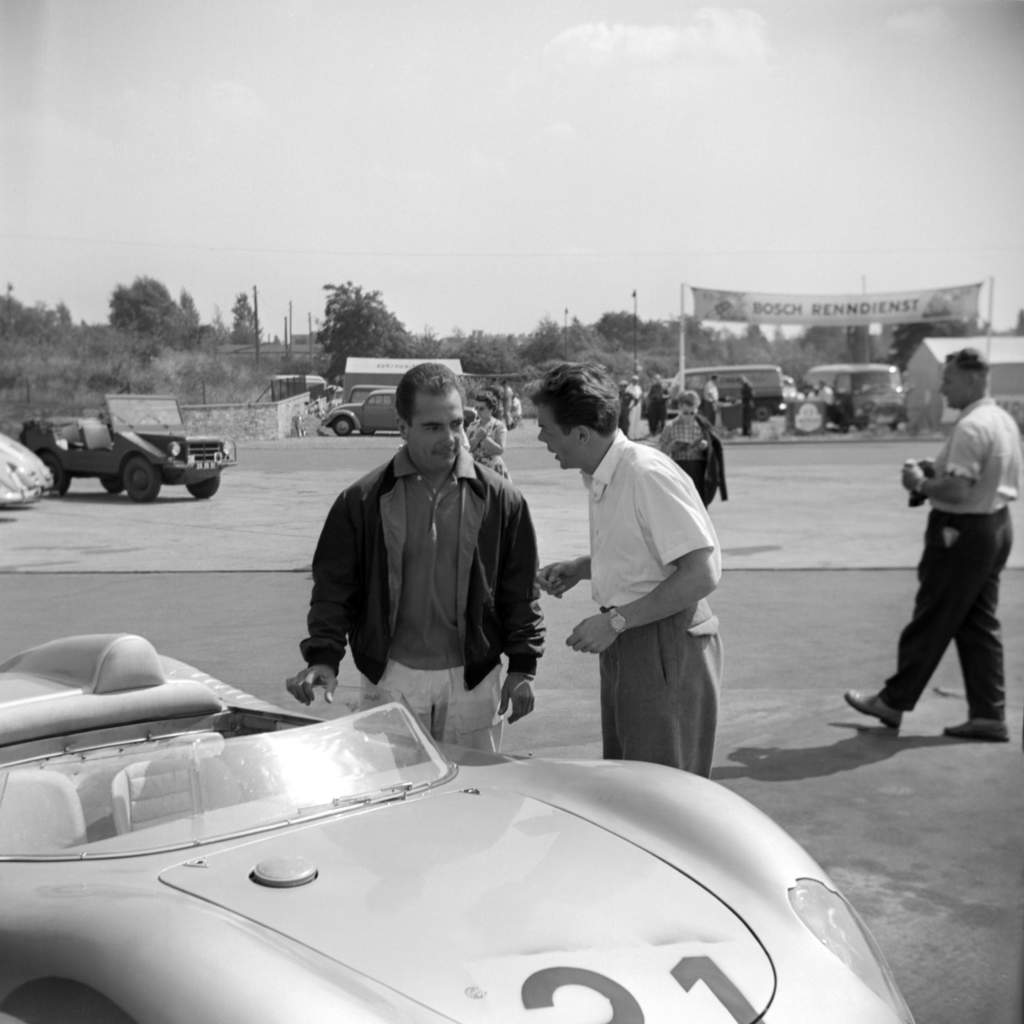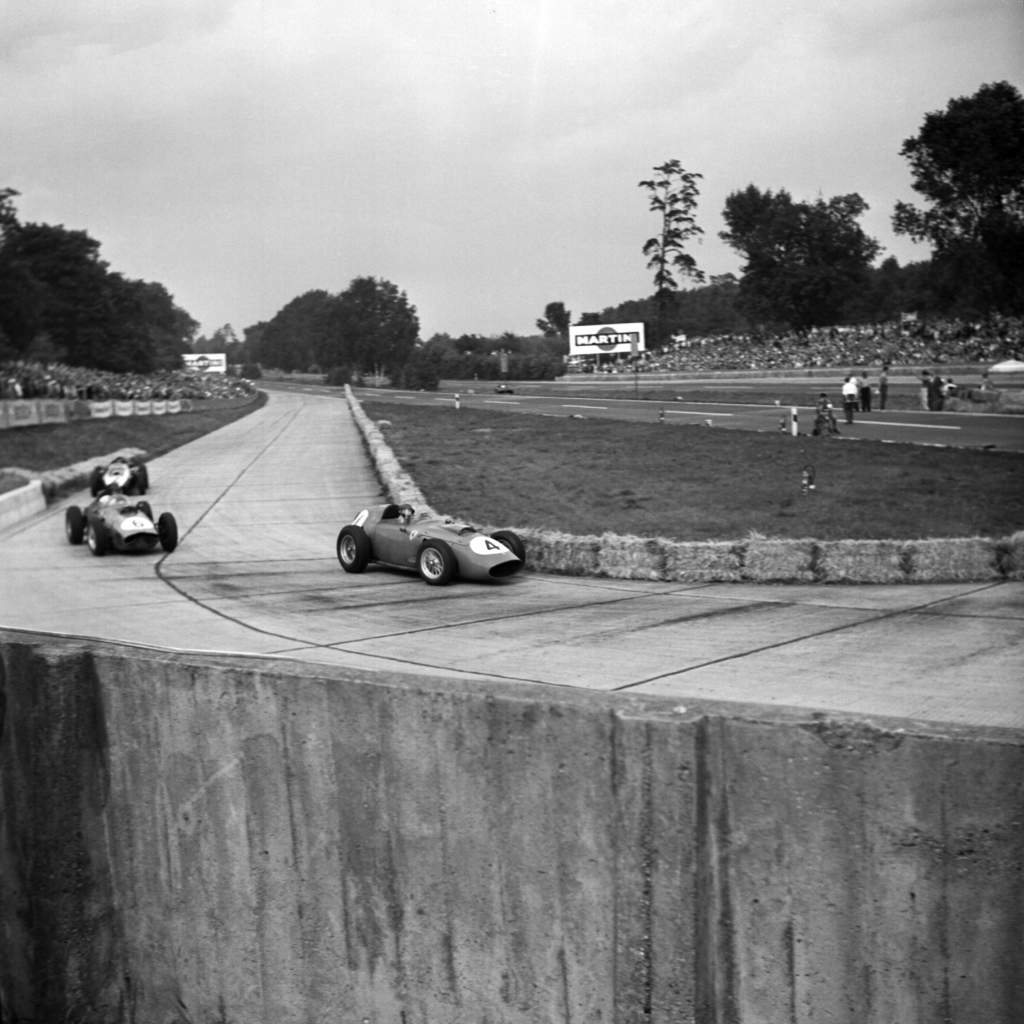The last time a grand prix meeting consisted of two races, the organisers over-ruled the international governing body about the format of the event, the circuit had been shortened because a border now ran through the middle of it, there were concerns about exploding tyres, and the driver who set pole had to start from the back.
Beyond all that, Ferrari’s former driver, sacked after punching the team manager two races earlier, was killed in a support race. His rookie replacement then finished second, as Ferrari’s main competition all retired from the same Heath Robinson-style last-minute modification.
With the addition of ‘The Sprint’, Silverstone this weekend sees a grand prix meeting consisting of two F1 races. But it’s not the first time.
Back in 1959 the German Grand Prix was a two-parter, with the result being the combined times of two races. There have subsequently been grands prix that have been red-flagged and restarted and the result determined by aggregate, but this race at Avus, the fifth round of the 1959 world championship, was deliberately scheduled as a two-parter.
The venue itself was the reason why. The ‘track’ (pictured below during the 1954 non-championship Berlin Grand Prix) comprised two long (over two miles each) stretches of autobahn joined at one end by a hairpin and at the other by a 45-degree banked turn with a brick surface.

Back then grands prix ran for up to three hours and tended not to feature pitstops. Running the tyres that long at speeds of up to 180mph for two miles at a time in between being abused over the bricks was reckoned perilous, given the tyre technology of the time. So the national organising body, Automobil von Deutschland (AvD), simply over-rode the international governing body stipulations of what a qualifying round of the championship must comprise! On the grounds of safety, it ignored the requirement that a grand prix must run for a minimum of two hours or 300km and instead arranged for two heats of one hour each.
Previously and subsequently the German Grand Prix’s home was the Nurburgring. But the 1957 and ’58 events there had not sold well. The AvD felt that the race needed to be closer to a big population centre. Hence the choice of Avus in Berlin, which pre-war had regularly hosted the ‘Avusrennen’ for grand prix cars and attracted crowds of up to 400,000. The war had of course placed a border between east and west Berlin, with the former now under the control of Russia. But the race was two years before the Berlin Wall was erected and so East Germans were still able to attend – and were encouraged to do so by the organisers accepting payment for tickets in East Marks. That border had, however, cut off a big loop of the circuit (which had actually been conceived in the 1920s as a dual-purpose public road/race circuit). The five-mile track used in ’59 was entirely within the western zone of the Soviet-encircled city. Previously the two straights had extended for five miles each…
The layout of the track heavily favoured the powerful front-engined Ferraris, which were otherwise beginning to struggle against the mid-engined Coopers. A 40bhp advantage (around 16%) was more than enough to overcome the lower drag of the mid-engined layout and the cornering advantages of the latter hardly mattered here. Ferrari entered Tony Brooks, Phil Hill and an exciting rookie, Dan Gurney. Gurney was a replacement for Jean Behra who’d had a spectacular falling out with team manager Eugenio Dragoni at the French Grand Prix, which led to Behra punching him!
Unsurprisingly, his place at the team did not survive that incident. The team’s fourth driver Cliff Allison was brought along to Avus too, but only as a reserve.
Allison qualified fastest of all but he is denied the pole position in official records because of his status as a reserve entry. This also meant he had to start from the back. Brooks took the official pole ahead of Stirling Moss in the Rob Walker Cooper, Gurney’s Ferrari, the works Coopers of Jack Brabham and Masten Gregory and Phil Hill’s Ferrari.

Behra, after his dismissal from Ferrari, had arranged to race an RSK Porsche-based F2 car (pictured above, with Behra on the left). He was granted an entry to the grand prix with this but was killed racing it in sports form in the support race.
With rain making the brick surface of the banked turn particularly hazardous, he spun to the top of the banking and was launched from there into a building, being ejected from the car into a flag pole.
In reaction, the organisers decreed that if it rained for the grand prix (it didn’t) a yellow light would show above the banking and drivers were not to go above a central white line there.
So the mood was sombre as the grand prix got underway. It was initially a slipstreaming battle between the Ferraris and Coopers but the latter all retired with broken transfer gears. These had been fitted to raise the final drive ratios of the under-powered Coopers so as to allow them to attain Ferrari-competitive speeds. Once they dropped out Brooks was in command and led home a Ferrari 1-2-3 with Gurney second ahead of Phil Hill. Unofficial pole-setter Allison retired early with a broken clutch.

The second heat was a near-repeat of the first, Brooks winning again, this time with Hill beating Gurney to second. On combined times, Gurney was second.
The event was not a success and the experiment was never repeated. For 1960 the race would be back at the Nurburgring and grands prix would never again be held in two heats.



